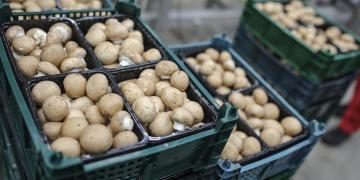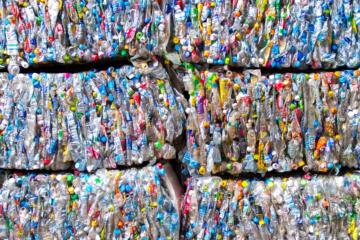Giving the scarcity and rising prices of raw materials, regulatory limitations, energy dependence, etc., it is essential to reflect on the circular transition in the agri-food sector. This transition is an integral part of the European objectives set out in the Green Deal and the Farm-to-Fork strategy and aims to enhance the sector’s resilience.
“Circular economy is a process of preservation, recuperation and valorisation of materials (nutrients and organic materials, packaging, co-productA co-product is a product that occurs in conjunction with an industrial process, the production of which was not directly sought, but it has a financial value nonetheless.s) and flows (energy, water, heat) that creates value while contributing to an efficient and sustainable agri-food system, based on collaboration, synergies and innovation." (Source)
“Traditional family farming”, which combines crop production and animal farming, and which restores nutrients to the soil, is inspired by the natural ecosystem.
In a more “specialised” agricultural activity, circularityCircularity describes the quantity of materials managed in a closed loop. involves “sharing, reusing, repairRepair is making a faulty product work again, allowing its use to be extended without the user parting with it, or with a view to reuseReuse designates all operations by which substances, materials or products that are not waste are used again in an identical way to their originally intended purpose. (donation, second-hand sale).ing, renovating, and recyclingAny recovery operation through which waste, including organic waste, is reprocessed to become substances, materials or products that can be used for their initial function or other functions. existing products and materials for as long as possible so that they retain their value. In this way, the product life cycle is extended to reduce the use of raw materials and the production of waste”. (Source)
These practices are increasingly adopted and continuously refined, fostering the development of agricultural production that respects natural biological cycles while ensuring a balanced combination between economic growth and efficient resource management.
In the food processing sector, the circular transition promotes investments and innovations that aim to
- minimise the input of resources and raw materials into manufacturing processes;
- to improve the energy performance of installations and;
- to enhance residual co-products or by-products (reintroduction into other production processes, use in animal feed, production of bioenergy or natural fertilisers to improve soil quality...).
Additionally, developing local food systems (production, distribution, consumption) such as short food circuits also reduces transport and storage costs, as well as the associated greenhouse gas emissions.
Industrial symbiosis processes developed between companies can also be intended, to share and pool services, equipment, exchanges of materials and energy.
To respond effectively, one of the initial steps is to consume primarily unprocessed or minimally processed foods. A food system based on the principles of the circular economyThe circular economy is a restorative and regenerative economy. By maintaining the value of the products, materials and resources in the economy through smart product design, repurposing and/or shared use of products, it reduces the extraction of natural resources by using resources already present in the economy. minimises food losses and waste, notably through proper management of use-by dates, as well as the redistribution of food surplus or products that don’t meet the standards for sale (shape, colour, appearance etc.). Collaborating with local associations and food banks (solidarity food stores) will ensure redistribution to people in need.
In conclusion, the circular economy in the agri-food sector promotes more sustainable practices by re-evaluating consumption of raw materials, reducing the environmental impact of the sector, and preserving natural resources.
Find out more
You can find out more information on this topic on the regional websites:
Read the roadmap on « sustainable food » from the Belgian food industry federation (Fevia) [in French and Dutch]





